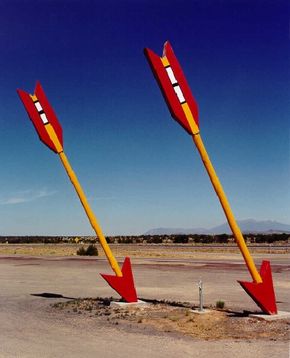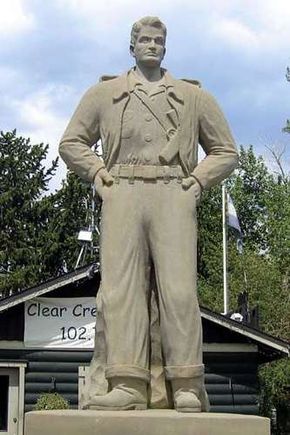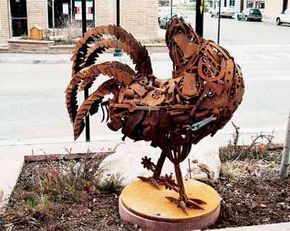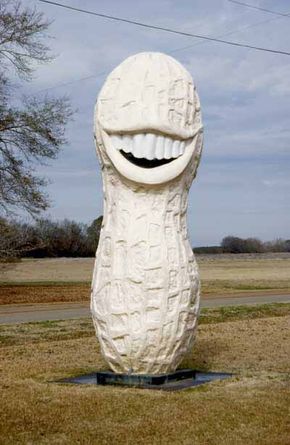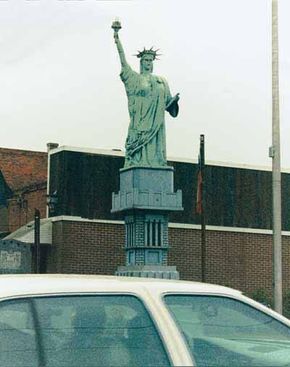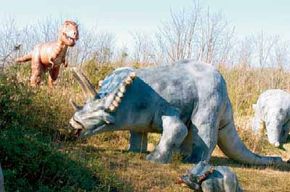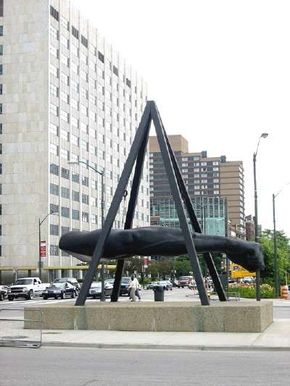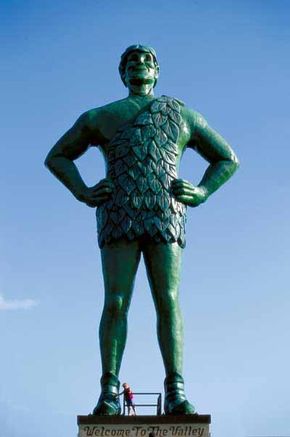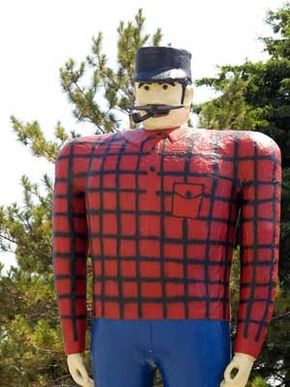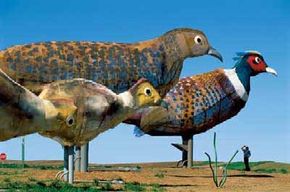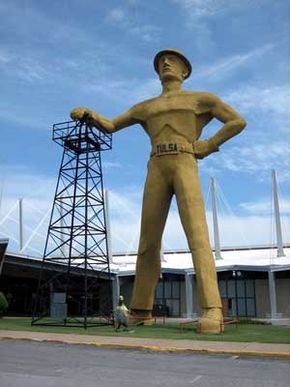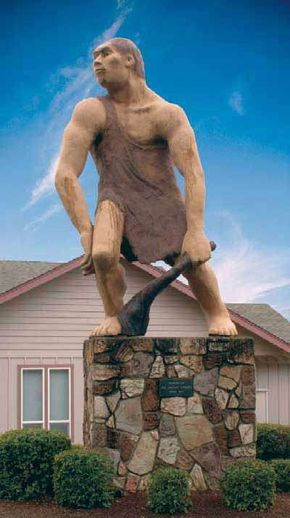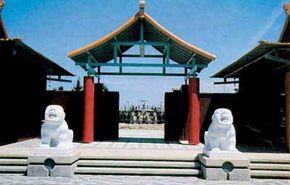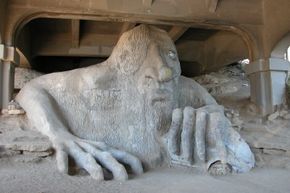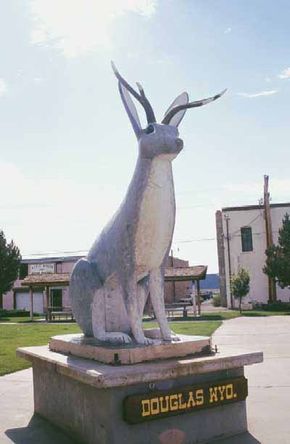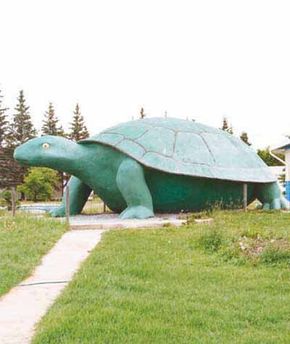Without a doubt the most prevalent form of roadside kitsch, the larger-than-life statue takes a familiar image and presents it in an entirely new context.
Maybe it's a fish out of water. Or a corporate mascot finally free from the label on a can of beans. Or it might be a city's favorite son or daughter, molded in concrete to forever remind people of the local link to greatness.
Advertisement
There is something at once disconcerting and reassuring about colossal statues near the highway. Like guardians of this strange land you're speeding through, they watch and protect. It's nearly impossible to escape the stare of someone who looms 100 feet over a city.
But they also beckon, primarily because
they are so hard to absorb while moving at 75 miles an hour. In order to avoid a car accident, the safest course of action is to take the time to pull over and examine this colossus of Anywhere, USA, up close.
While the very oldest roadside Americana predates the car, the bulk of roadside statues came to be in the latter half of the 20th century.
When the West opened up to the middle class as a vacation destination, it catalyzed a movement to create the brashest statues and put them up in places where the most out-of-towners could see them.
While the Statue of Liberty, Mount Rushmore, and religious icons the world over inspired the artists responsible, regionally grown legumes and brightly colored animals also proved themselves effective muses.
So who exactly is deserving of having their likeness magnified, carved or molded, and presented to the occupants of passing vehicles? To be honest, the bar hasn't been set all that high. The inspiration might be an animal, even a common household pest like a termite, and somebody could still find a reason to build a super-size model to scale.
These larger-than-life creations don't even have to be real people: The subject of a roadside sculpture can be the stuff of tall tales or legend. Alternately, it could be a generic stereotype -- say, a pirate, a cowboy, or a lumberjack. Or a cartoon character who has migrated from the funny pages to the side of the highway.
Sure, a statue can be a respectful homage to a truly great person, but once the thing is bigger than life (i.e., humongous), the exaggeration tends to undercut the sanctity.
No matter what the finished product looks like, there was an inspiration behind each and every one of the roadside effigies you'll find in this article.
Let's get started on our road to roadside statues with a 40-foot-tall character from Arizona in the next section.


